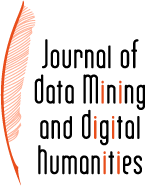 |
Benjamin Molineaux ; Warren Maguire ; Vasilios Karaiskos ; Rhona Alcorn ; Joanna Kopaczyk et al. - Visualising pre-standard spelling practice: Understanding the interchange of ‹ch(t)› and ‹th(t)› in Older Scots
jdmdh:5568 - Journal of Data Mining & Digital Humanities, 22 décembre 2020, Numéro spécial sur les visualisations en linguistique historique - https://doi.org/10.46298/jdmdh.5568- 1 University of Edinburgh
- 2 The University of Edinburgh
- 3 Scottish Language Dictionaries
- 4 University of Glasgow
Alphabetic spelling systems rarely display perfectly consistent one-to-one relationships between graphic marks and speech sounds. This is particularly true for languages without a standard written form. Nevertheless, such non-standard spelling systems are far from being anarchic, as they take on a conventional structure resulting from shared communities and histories of practice. Elucidating said structure can be a substantial challenge for researchers presented with textual evidence alone, since attested variation may represent differences in sound structure as well as differences in the graphophonological mapping itself. In order to tease apart these factors, we present a tool-Medusa-that allows users to create visual representations of the relationship between sounds and spellings (sound substitution sets and spelling substitution sets). Our case study for the tool deals with a longstanding issue in the historical record of mediaeval Scots, where word-final appear to be interchangeable, despite representing reflexes of distinct pre-Scots sounds: [x], [xt] and [θ]. Focusing on the documentary record in the Linguistic Atlas of Older Scots ([LAOS, 2013]), our exploration surveys key graphemic categories, mapping their lexical distributions and taking us through evidence from etymology, phonological typology, palaeography and historical orthograpy. The result is a novel reconstruction of the underlying sound values for each one of the target items in the record, alongside a series of sound and spelling changes that account for the data.
Statistiques de consultation
